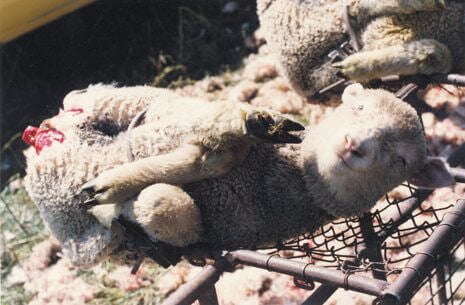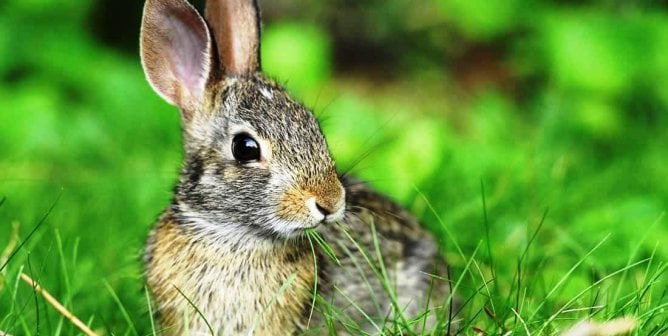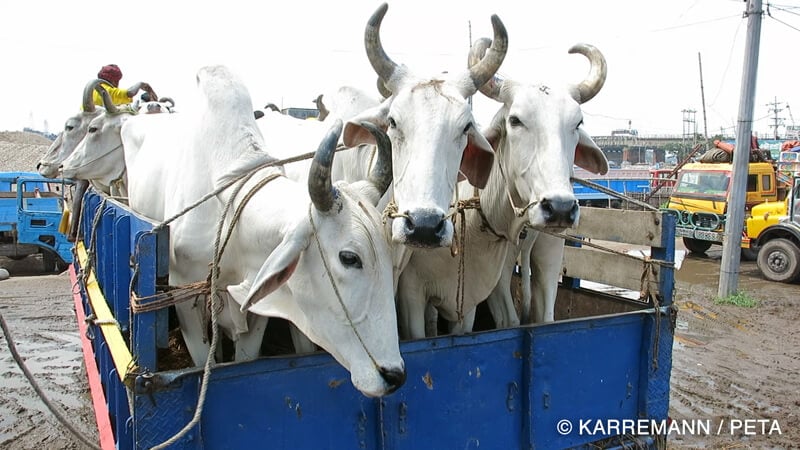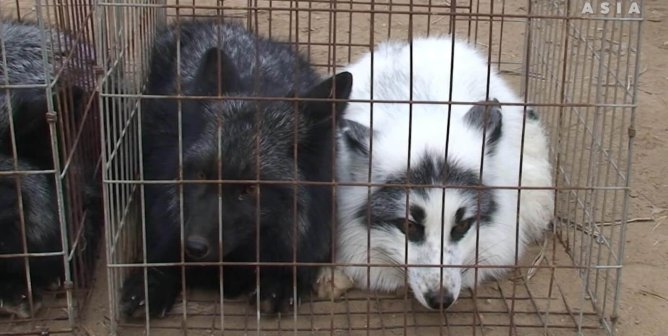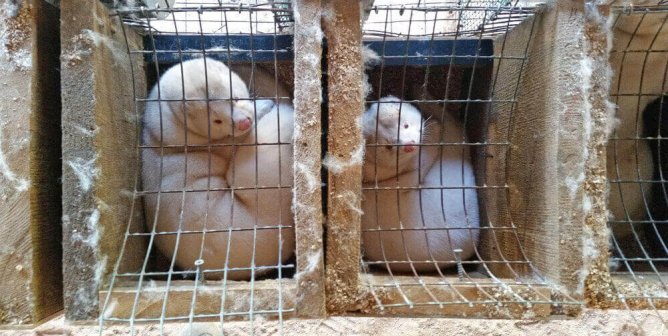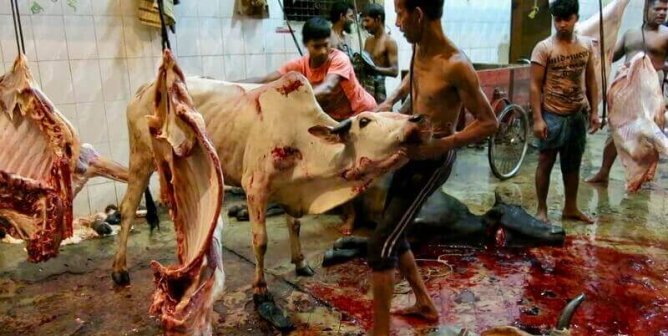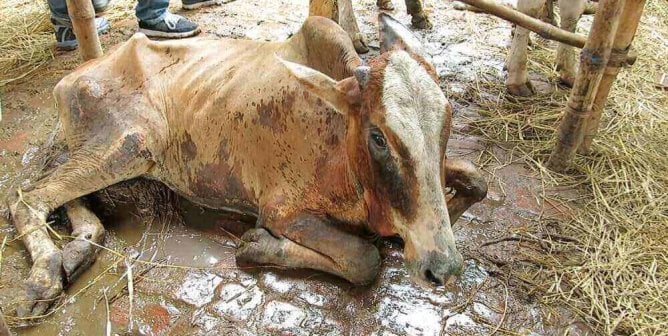Mulesing by the Wool Industry
Most of the world’s wool comes from Australia. The most commonly raised sheep in that country are merinos, who are specifically bred to have wrinkly skin, which means more wool per animal.
This unnatural overload of wool causes many sheep to collapse and even die of heat exhaustion during hot months, and the wrinkles collect urine and moisture. Attracted to the moisture, flies lay eggs in the folds of skin, and the hatched maggots can eat the sheep alive.
To prevent this so-called “flystrike,” Australian ranchers perform a barbaric procedure called “mulesing,” in which they force live sheep onto their backs, restrain their legs between metal bars, and, often without any painkillers whatsoever, carve huge chunks of skin away from the animals’ backsides or attach vise-like clamps to their flesh until it dies and sloughs off. Both procedures are terribly painful.
Mulesing is a crude attempt to create smoother skin that won’t collect moisture, but the exposed, bloody wounds often become infected or flystruck. Many sheep who have undergone the mulesing mutilation still suffer slow, agonizing deaths from flystrike.
Mutilating sheep is not just cruel; it’s also ineffective. Better husbandry is the answer, not mutilating animals. Sheep can be spared maggot infestation through humane methods such as diet regulation, spray washing, and simply breeding types of sheep who are better suited for the Australian climate.
H&M, Perry Ellis, major fashion house HUGO BOSS, sporting goods giant Adidas, and numerous other companies have pledged to move away from mulesed wool or implemented an outright ban on wool from lambs who have been mulesed. You can help, too, by refusing to buy wool of any kind.

